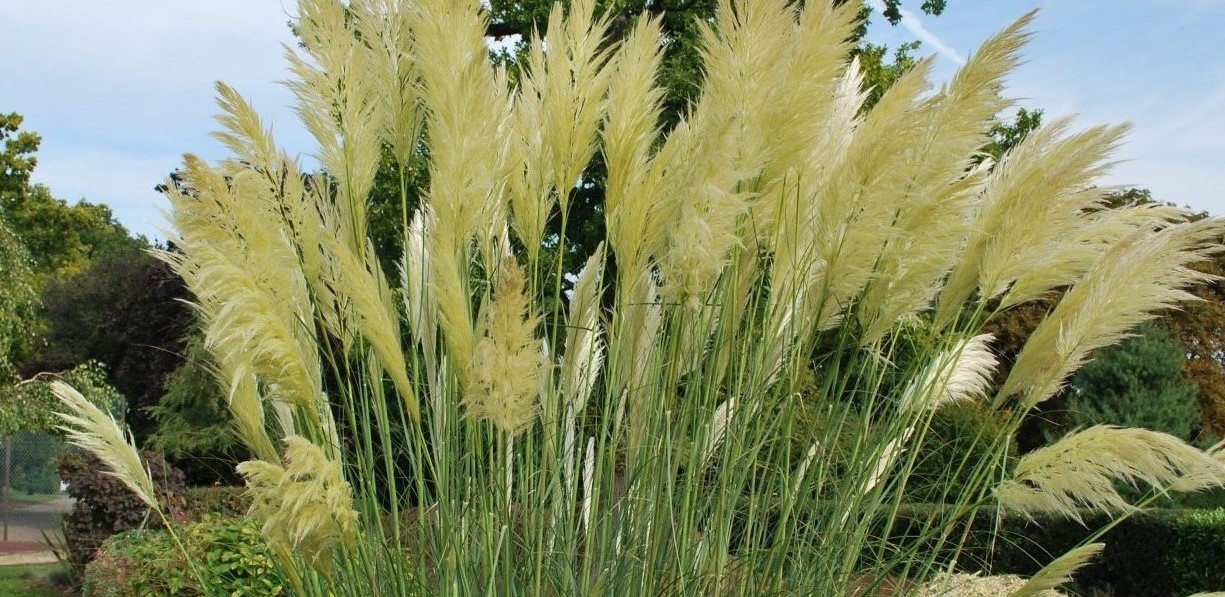
Are you intrigued by the beauty and diversity of plants? If so, you’ll definitely want to learn more about Cortaderia, a fascinating genus of plants that includes the well-known Pampas grass. Cortaderia is known for its tall, feathery plumes that sway gracefully in the wind, adding a touch of elegance to any landscape. But there’s much more to these plants than meets the eye. In this article, we will delve into 16 intriguing facts about Cortaderia that will not only expand your knowledge but also deepen your appreciation for these remarkable plants. From their geographical distribution to their ecological importance, from their cultural significance to their unexpected uses, you’ll discover a wealth of information about Cortaderia that will surely leave you amazed. So, let’s embark on this journey and unravel the captivating world of Cortaderia!
Key Takeaways:
- Cortaderia, also known as Pampas Grass, is a stunning and low-maintenance plant that can reach impressive heights, attract wildlife, and add texture to landscapes. It’s perfect for busy gardeners and nature lovers alike!
- While Cortaderia is a beautiful and versatile plant, it’s important to be mindful of its potential invasiveness in certain regions. Before planting, check if it could outcompete native vegetation and cause ecological imbalances.
Cortaderia belongs to the Poaceae family.
Cortaderia, commonly known as Pampas Grass, is a flowering plant that belongs to the Poaceae family. It is native to South America and has become popular worldwide for its striking appearance.
Cortaderia can reach impressive heights.
One of the most fascinating aspects of Cortaderia is its ability to grow to impressive heights. Depending on the variety, it can reach heights of up to 10 feet or more, making it a visually captivating plant in any landscape.
There are several species of Cortaderia.
Cortaderia encompasses various species, including Cortaderia selloana, Cortaderia jubata, and Cortaderia pilosa. Each species has its unique characteristics and growth habits, adding diversity to the world of ornamental grasses.
Cortaderia is known for its spectacular plumes.
One of the defining features of Cortaderia is its spectacular plumes. These feathery plumes emerge in late summer and fall, creating a dramatic effect in gardens and landscapes. They come in different colors, including white, pink, and purple, adding vibrancy to any setting.
Cortaderia is a hardy and adaptable plant.
Cortaderia is a hardy plant that can thrive in various climates and soil conditions. It is known for its tolerance to drought, heat, and poor soil, making it a versatile choice for landscaping projects.
Cortaderia requires minimal maintenance.
One of the advantages of growing Cortaderia is its low maintenance requirements. Once established, it requires minimal watering and is relatively pest and disease-resistant, making it an ideal choice for busy gardeners.
Cortaderia can attract wildlife.
The beautiful plumes of Cortaderia can attract wildlife, including birds and butterflies. It serves as a crucial food source and habitat for various insects and small animals, enhancing biodiversity in gardens.
Cortaderia adds texture and movement to landscapes.
With its tall plumes swaying in the wind, Cortaderia adds texture and movement to landscapes. It creates a sense of dynamism and liveliness, making it a popular choice for creating focal points in gardens.
Cortaderia can be used for erosion control.
Due to its extensive root system, Cortaderia is often used for erosion control on hillsides and slopes. It helps stabilize the soil and prevent erosion, making it an effective solution for landscaping projects in such areas.
Cortaderia is a popular choice for dried flower arrangements.
The long-lasting plumes of Cortaderia make it a popular choice for dried flower arrangements. They can be cut and used in various floral designs, adding a touch of natural beauty to indoor spaces.
Cortaderia is used in traditional crafts.
In some cultures, Cortaderia is used in traditional crafts. The plumes are woven into decorative items such as baskets, mats, and even clothing, showcasing the cultural significance of this versatile plant.
Cortaderia has medicinal uses.
Cortaderia has been utilized in traditional medicine for its potential medicinal properties. Extracts from the plant have been used for conditions such as urinary tract infections, edema, and as a diuretic.
Cortaderia can be propagated through division.
If you want to propagate Cortaderia, you can easily do so through division. Mature clumps can be divided in spring or fall, allowing you to expand your Cortaderia collection or share it with friends.
Cortaderia is deer-resistant.
One advantage of growing Cortaderia is that it is deer-resistant. Its tough leaves and sharp edges deter deer from feeding on it, making it a suitable choice for landscapes where deer are a common issue.
Cortaderia is a popular choice for privacy screens.
Due to its tall growth habit, Cortaderia is often used as a natural privacy screen or windbreak. It can provide a barrier, shielding your garden or property from unwanted views or strong winds.
Cortaderia can be invasive in some regions.
While Cortaderia is a desirable plant in many contexts, it can become invasive in some regions. Its ability to spread rapidly through self-seeding can outcompete native vegetation, leading to ecological imbalances. It is important to check the invasiveness of Cortaderia in your area before planting.
Conclusion
In conclusion, Cortaderia, commonly known as Pampas Grass, is a fascinating plant with a rich history and numerous intriguing facts. From its native origins in South America to its global popularity as an ornamental grass, Cortaderia has captured the imagination of plant enthusiasts and gardeners alike. Its impressive size, stunning feathery plumes, and resilience in harsh conditions make it a standout choice for landscaping and decoration.Whether you’re drawn to its aesthetic appeal, its potential as a windbreak, or its symbolism in landscapes, Cortaderia is a versatile and captivating plant that continues to enchant people around the world. Consider incorporating this remarkable plant into your garden to add texture, movement, and a touch of wild beauty. With its long list of unique characteristics, Cortaderia is sure to make a distinctive and eye-catching addition to any outdoor space.
FAQs
1. Can Cortaderia survive in cold climates?
Yes, Cortaderia is highly adaptable and can withstand a wide range of growing conditions, including cold climates. Some varieties, such as Cortaderia selloana ‘Pumila,’ are particularly hardy and can tolerate temperatures as low as -10°F (-23°C).
2. Does Cortaderia require a lot of maintenance?
Cortaderia is generally a low-maintenance plant once established. It is drought-tolerant and does not require frequent watering. However, it is important to prune the plant regularly to remove dead or damaged foliage and to prevent it from becoming overgrown.
3. Are there any ecological concerns associated with Cortaderia?
Cortaderia has been listed as an invasive species in some regions, particularly in parts of North America and New Zealand. It can outcompete native vegetation and disrupt local ecosystems. Care should be taken when planting Cortaderia to prevent its spread into natural areas.
4. Can Cortaderia be grown in containers?
While Cortaderia can be grown in containers, it is important to choose a dwarf variety that is suitable for this purpose. Regular pruning is necessary to keep the plant’s size in check and prevent it from becoming overcrowded.
5. How long do the plumes of Cortaderia remain attractive?
The plumes of Cortaderia remain attractive throughout the fall and winter months, gradually fading to a pale golden color. With proper care, they can persist for several months, providing visual interest and texture to the landscape.
Cortaderia's intriguing characteristics make it a captivating plant for nature enthusiasts and gardeners alike. However, caution must be exercised as some species can become invasive species if not managed properly. For inspiration on creating beautiful outdoor spaces, consider exploring the garden design ideas showcased at the renowned Chelsea Flower Show. Additionally, expanding your knowledge of landscaping techniques can help you create a stunning and harmonious environment around your home.
Was this page helpful?
Our commitment to delivering trustworthy and engaging content is at the heart of what we do. Each fact on our site is contributed by real users like you, bringing a wealth of diverse insights and information. To ensure the highest standards of accuracy and reliability, our dedicated editors meticulously review each submission. This process guarantees that the facts we share are not only fascinating but also credible. Trust in our commitment to quality and authenticity as you explore and learn with us.


